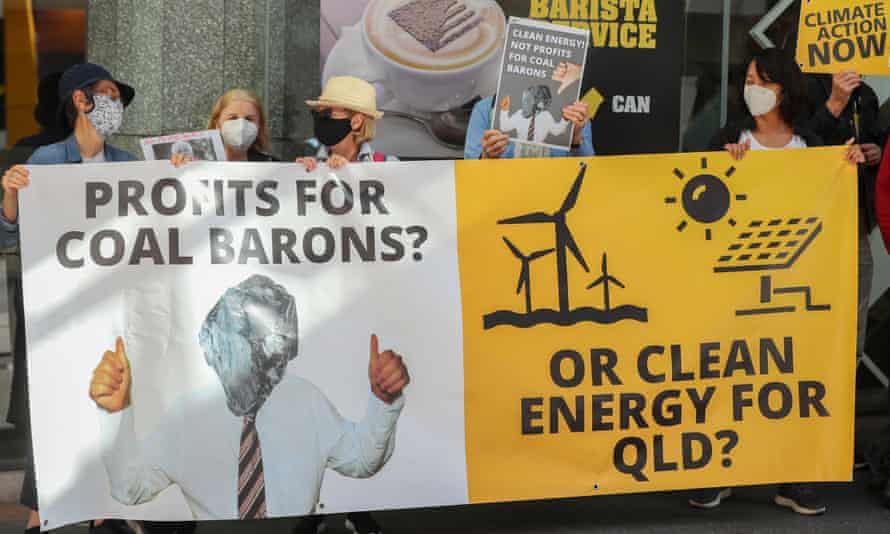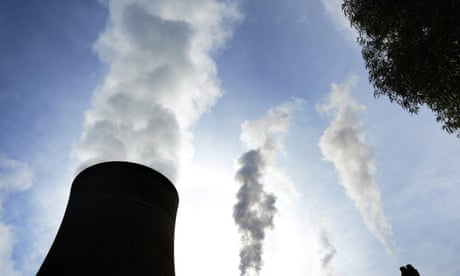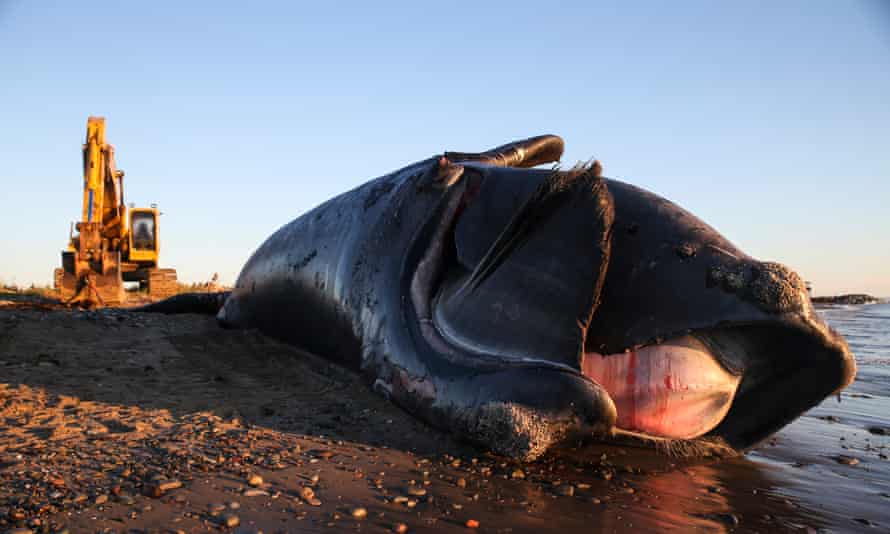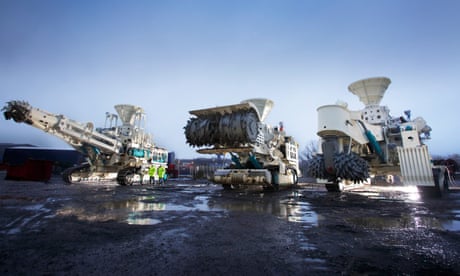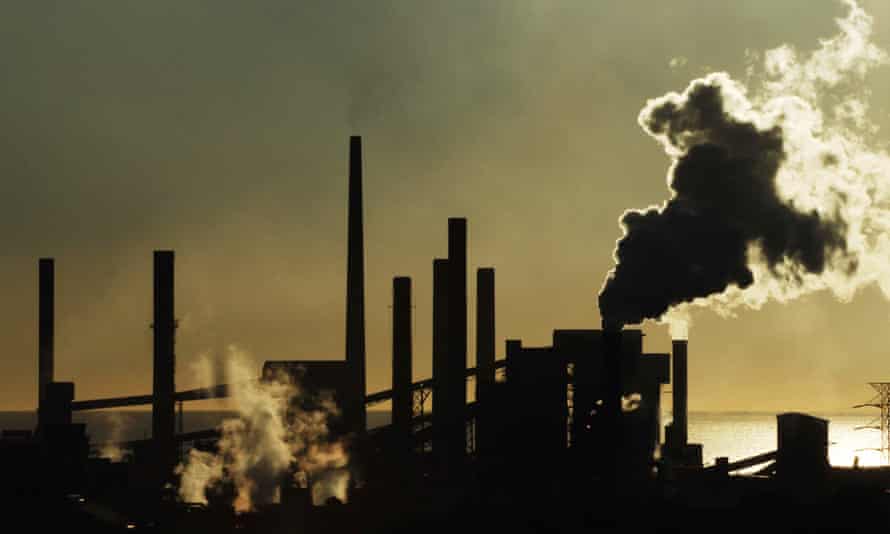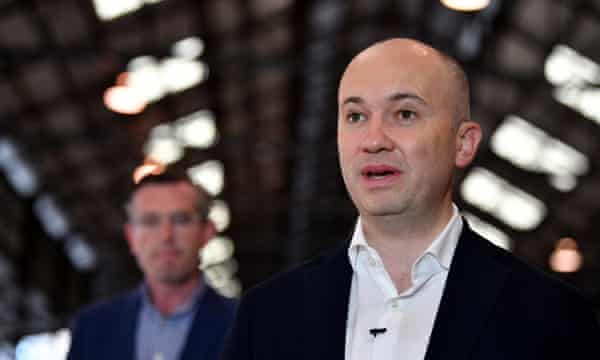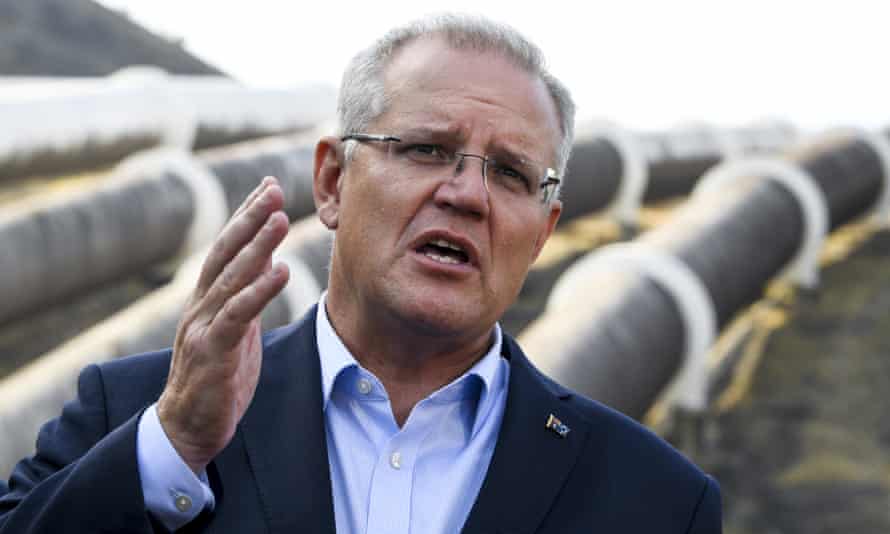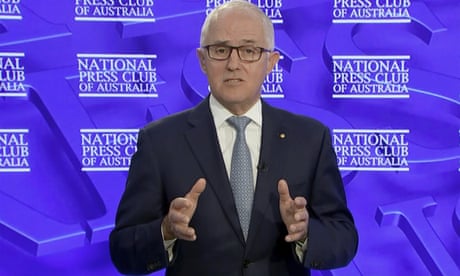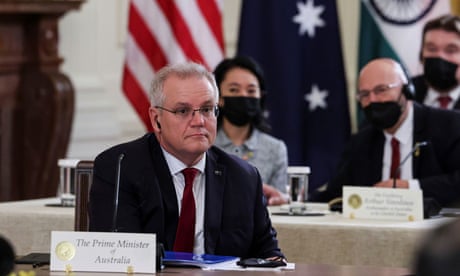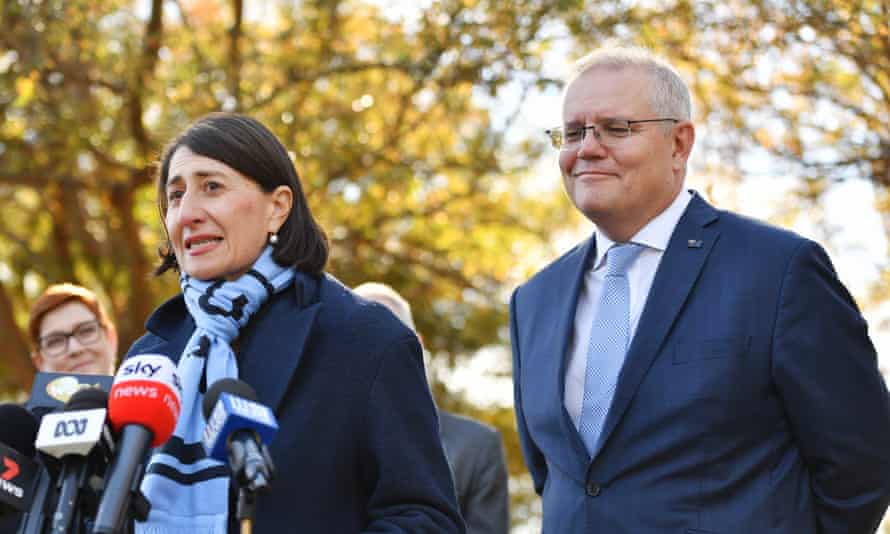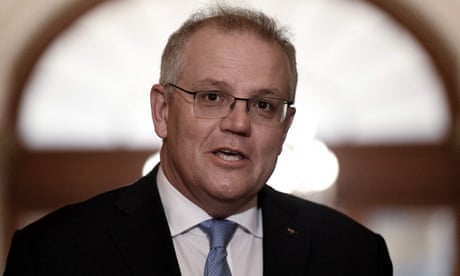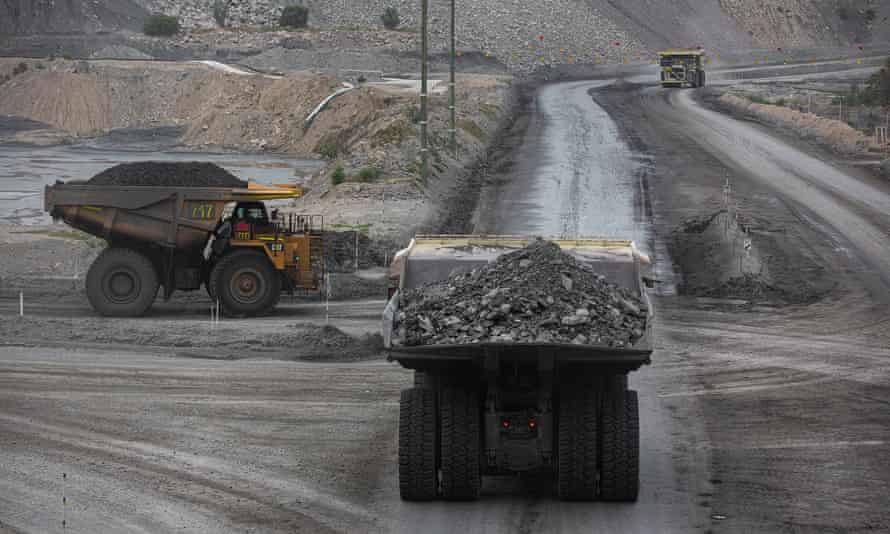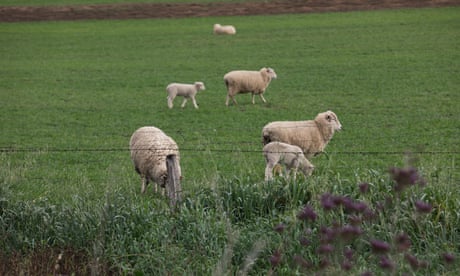Extract from The Guardian
This is the first of a weekly column examining claims about climate change made by governments, politicians, business and in the media.

Last modified on Thu 30 Sep 2021 15.31 AEST
A little over a month before the start of a major climate conference in Glasgow, the Morrison government is struggling to agree on emissions reduction targets, and a promised long-term strategy to cut climate pollution has still not materialised.
But at least it has an advertising campaign.
Earlier this month, the government released the “Australia’s Making Positive Energy” website and a blitz of ads across multiple platforms. It’s already on your telly.
The idea is that Australia has a “strong track record and future plans to reduce our emissions,” the emissions reduction minister, Angus Taylor, said.
That strong track record may be news to some people. There’s also a catchphrase: “What we do today, will define our tomorrow.” Gas-fired recovery, anyone?
The campaign makes a big central claim about Australia’s record on emissions and – as this column is the first of a weekly exercise in checking the facts on climate change – let’s have a look.
Australia, the campaign says, has cut emissions by 20% since 2005 – a figure Taylor used when releasing the latest quarterly emissions report at the end of last month.
The big issue here is to know where across Australia’s economy those emissions falls have been happening and whether or not they relate to anything the government has actually done (because if it does relate to government policy, then that deserves praise).
The government’s own data show the vast majority of the falls are in the land-use sector where the federal government doesn’t make policy. When state governments have tried to control land clearing, this hasn’t been done to tackle greenhouse gas emissions, but to slow down habitat loss and erosion.
Taking away the effect of land-use change, the government’s claim that emissions have fallen 20% since 2005 becomes a less impressive 3%.
Emissions in the electricity sector – which account for about a third of Australia’s footprint – have dropped about 16% since 2005, from 196.9Mt to 164.1Mt.
But thanks mostly to the expansion of the nation’s massive LNG industry, emissions in the second-largest sector of stationary energy are rising. Transport emissions are also going up.
When Taylor announced the latest quarterly emissions report, he said if you excluded industries like LNG that are producing stuff for export then emissions had actually dropped by 38.3% since 2005.
This is like saying “if we hadn’t generated all these emissions then our emissions would be lower.” It’s disingenuous but in ALL CAPS.
Not included in the campaign is the Australian government’s “gas-fired recovery” from the Covid-induced economic slowdown or the $600m committed for a new gas plant.
Not in the promotion either are Morrison’s statements from only a year ago when he was saying things like “we’ve got to get the gas” and “gas is not only central to our industry plan, it’s also central to our energy plan.”
The International Energy Agency says there’s no room for any new fossil fuel developments if the world is to reach net zero by 2050.
Cow burps and seaweed
But also featured is asparagopsis – a red seaweed which the campaign says is a cattle “feed supplement that reduces the production of methane by more than 80% and has the potential to increase livestock productivity.”
The impression could be that the seaweed supplement already exists and the reduction potential is clear. But there is still a long way to go before this claim can hold water.
Beef and dairy cattle burp methane that’s produced in a part of their stomach when they digest their food.
The basis for the 80% figure is a study from earlier this year and it only applies to reducing methane from cattle while they’re in a feedlot (and can easily be fed the supplement), rather than over their lifespan.
Only about half the methane emitted by cattle comes while they are in a feedlot. For dairy cows that come in for daily milking, this is less of a problem.
The number of steers fed the dose of seaweed that delivered a reduction in methane of more than 80% numbered only six. A previous Australian trial that showed even higher methane-reducing potential of the supplement with a different breed of cattle subjected five steers to the dose delivering the very high reduction.
Future Feed, which holds the intellectual property for the supplement, tell me they are confident in the scientific results because results from each animal is a repetition of a previous result “so you can achieve the scientific rigour without the need for large scale trials”.
Future Feed expects “first adopters” to get a supply of the supplement by the end of this year or early next year.
A spokesperson said: “Currently, our science is applicable in the feedlot and we have a program to go into grazing that is under way and will span the next two years.”
The Morrison government has given $1m to scale up production of the seaweed which seems tiny considering the emissions reduction potential to the beef industry worldwide.
‘Lazy environment writers’
Former editor of the Australian Chris Mitchell, writing in his old newspaper, was annoyed at how the campaign had been reported, coming as it did when the UN’s climate science panel released its latest report, known as AR6.
According to Mitchell, “lazy environment writers” had reported the “political spin” from UN secretary general António Guterres that the report represented a “code red for humanity” but had ignored three facts he said were in it.
Let’s haul ourselves on to our lazybones.
Mitchell wrote that AR6 had “found little evidence of increasingly severe storms.” The report’s “summary for policymakers” has a section which reads:
The frequency and intensity of heavy precipitation events have increased since the 1950s over most land area for which observational data are sufficient for trend analysis (high confidence), and human-induced climate change is likely the main driver.
The report does say that data limitations make it hard to find past trends on a global scale for tropical cyclones – but points out studies have shown human-caused climate change puts more rainfall into cyclones.
Mitchell also interpreted the report as saying it had “toned down temperature forecasts”. Did it?
A headline figure for followers of these reports is what’s known as Equilibrium Climate Sensitivity - that is, the global warming you get if you were to allow the amount of CO2 in the atmosphere to double from pre-industrial times and then hit pause and let the climate settle into a new normal.
The previous IPCC report released in 2013 found ECS would be between 1.5C to 4.5C.
The latest report said the likely range would shave half a degree off the top end, but the lower end was now a whole degree warmer with ECS now at 2.5 to 4C. But the report also said it could not rule out ECS greater than 5C.
That’s hardly toning things down.
Newman’s temperature conspiracy
In the days after News Corp Australia’s campaign was confirmed, Newman wrote in The Daily Telegraph that BoM’s thermometers “are shamelessly located next to busy highways, airport runways, atop coal loaders, or anywhere that will ramp up temperatures to fit its climate change narrative.”
Considering Brisbane airport’s weather station was put there in 1929 and Mount Gambier’s has been there since 1941, it appears the bureau was either well ahead of its time in making its conspiracy plans, or the conspiracy doesn’t exist.
Darwin airport started recording maximum air temperatures in 1941 and has just recorded its hottest September day on record.
